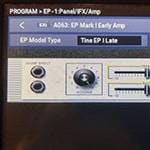■ Previous GM Sound Source Series
GM Sound Source 01: Ancient GM Sound Sources
GM Sound Source 02: Piano Category
GM Sound Source 03: Chromatic Percussion Category
GM Sound Source 04: Organ Category
GM Sound Source 05: Guitar Category
GM Sound Source 06: Bass Category
GM Sound Source 07: Orchestra Category
GM Sound Source 08: Ensemble Category
GM Sound Source 09: Brass Category
GM Sound Source 10: Reed Category
GM Sound Source 11: Pipe Category
This category contains two types of sounds: basic waveforms and sounds specifically designed for lead playing. Here, ‘lead’ refers to a solo performance sound.
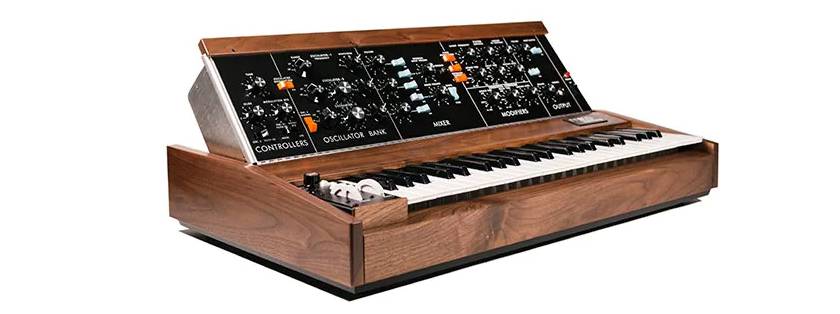
Originally, synthesizers are devices for sound synthesis, allowing users to create any imagined sound freely. However, GM sound modules are primarily based on acoustic instruments, meaning that sampling is their core format. The synth category in GM sound modules follows the same principle, so most GM synth sounds are sample-based rather than fully synthesized. While this allows for playing fragments of synthesizer tones, it doesn’t offer the full flexibility of real-time sound design like a true synthesizer. That said, by dynamically editing with filters inside the TTS, you can achieve a somewhat analog synth-like sound.
In the video below, you can listen to the tones from the TTS synthesizer.
081 Basic Waveforms (Square Wave, Sine Wave)
081 000 Square Wave - Range: A0-C8
This patch consists of two slightly detuned square waves, creating a pulsating, beating effect. As shown in the video below, the waveform is constantly changing. In older GM sound modules like TTS, each note typically uses one voice (one waveform), but in this patch, each note utilizes two square waves (two voices). Many patches in the synth category use two voices. The effect of using two voices varies, but in this case, it’s used for detuning. Most acoustic instruments use only one voice, but instruments like honky-tonk pianos also use detuning, meaning they effectively utilize two voices as well.

081 001 Square - Range: A0-C8
This is a single-voice version of the patch above, producing a somewhat imperfect square wave reminiscent of an analog synthesizer. Square waves are composed of odd harmonics in additive synthesis, but they can also be generated simply by switching a signal on and off, making them one of the most cost-efficient waveforms. This is why early video game consoles commonly used them. However, in high-quality audio environments, pure on/off square waves can cause aliasing noise. When using them in a DAW, it’s necessary to round off high frequencies to keep them within the Nyquist frequency range and prevent unwanted artifacts.

081 002 Sine Wave - Range: A0-C8
The sine wave is an essential waveform for experiments. It consists of only the fundamental frequency and contains no harmonics. When used as a musical tone, mid-to-high frequencies are generally more practical. Lower frequencies lack harmonics, making them less audible and harder to distinguish. As a result, sine waves in the low range are often used as sub-bass to complement other sounds. In the video, the sine wave is used to imitate an ocarina, which has a high pitch and a waveform similar to a sine wave. One of the most well-known uses of the sine wave is in TV time signals.

082 Basic Waveforms - Sawtooth Wave
082 000 Saw Wave (Double Saw) - Range: A0-C8
This patch uses two voices to create a detuned sawtooth wave, producing a sound with a chorus-like effect. In the video, it is used to mimic a part of the movie Flashdance. During the 1970s and 80s, basic synthesizer waveforms like this were widely used in music. Since sawtooth waves don’t exist in acoustic instruments, they sounded fresh and unique at the time. The sawtooth wave is often said to resemble bowed string instruments. Because this patch includes chorus effects, in the video, it is played as a string ensemble-like sound.

082 001 Saw - Range: A0-C8
This is the single-voice version of the sawtooth wave described above. An ideal sawtooth wave contains all integer harmonics, making it an excellent foundation for sound design. It is the most commonly used waveform in subtractive synthesis with analog synthesizers. However, the TTS waveform is not a pure sawtooth wave—it is more like a ‘shark fin’ waveform.

082 002 Doctor Solo (Saw + Square) - Range: A0-C8
This waveform also uses two voices, but in a different way from the detuned square or sawtooth waves mentioned earlier. It combines a sawtooth wave and a square wave, a method commonly used in analog synthesizers of the past. Since a square wave can resemble the tone of wind instruments, this combination gives it a synth brass-like character.

082 003 Natural Lead (Double Saw) - Range: A0-C8
This is a detuned sawtooth wave sound using two voices, but it has a dry, unprocessed tone.
Looking at the image below, you can clearly see the movement of the sawtooth-shaped waveform. The distinct visual shape of a waveform often directly reflects its sonic characteristics.

082 004 Sequenced Saw - Range: A0-C8
This sound has a short attack with no sustain, making it ideal for sequenced patterns. It has a familiar tone reminiscent of the golden age of analog synthesizers. Although its name suggests a sawtooth wave, closer observation reveals a more complex waveform.

From this point on, these are carefully crafted synthesizer sounds. Some patches are designed to resemble real instruments, while others showcase unique sounds that only a synthesizer can produce. Since this category involves synthesized sounds, we can think of it like paintings, compared to photographs of real instrument samples. Other instrument categories consist of recorded and edited samples, which are more like photo collages.
Synthesized emulations of real instruments resemble realistic paintings. Original synth sounds that have never existed before are more like abstract art. Even the patch names are designed to evoke specific images and impressions.
083 000 Syn. Calliope (SynStrings + Pan Flute) - Range: C2-C7
This patch is designed to imitate the real-world instrument called the Calliope. The Calliope is a steam-powered pipe organ, historically used during the steam engine era following the Industrial Revolution. The illustration below shows a Calliope mounted on a carriage, but it was also used on trains and other vehicles. There was even an episode of Thomas the Tank Engine that featured a Calliope.

Calliope, public domain (Sourced from Wikipedia)
This patch originates from a sound included in the Roland D-50, released in 1987. It was widely used from the mid-1980s through the 1990s. In terms of sound design, this patch blends synthetic strings with a pan flute, using a dual-voice setup.
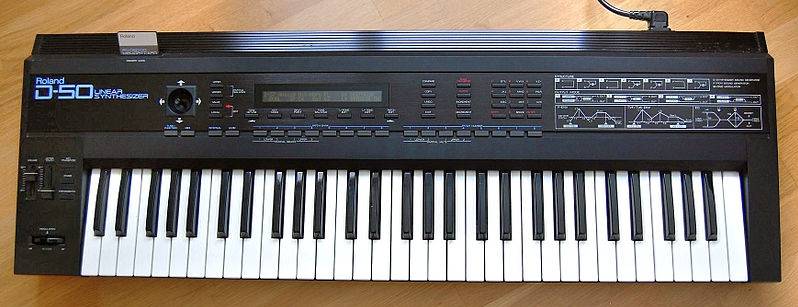
Roland D50, public domain (Sourced from Wikipedia)
084 000 Chiffer Lead - Range: C2-C7
This patch uses two voices, layering a pan flute-like sound with string-like tones while adding a distinct attack characteristic. In organ and flute sounds, the breath noise before the note sounds is sometimes called chiff noise. The name of this patch might be derived from that, although it is uncertain. Synthesized sounds exist in the realm of imagination, so their names are often shrouded in mystery. Some patch names may have been inspired by popular songs of the time.
085 Synth Lead with a Unique Attack
085 000 Charang - Range: C2-C7
This patch is likely inspired by the Charango, a real-world South American instrument that resembles a mandolin. The Charango traditionally has a body made from an armadillo shell, but this synthesized version produces a much noisier, more chaotic sound. This unique character might actually make it interesting in its own way. The patch is created using a two-voice setup, combining a clearly distorted guitar tone with an acoustic plucked string instrument. Unlike analog synthesis, this patch was designed using sampling-based techniques.

Charango, Lardyfatboy CC BY-SA 4.0 (Sourced from Wikipedia)
085 001 Wire Lead - Range: C2-C7
This is a two-voice patch. It has a strange attack that becomes oddly addictive. This is one of those fun patches that only a synth can create.
086 000 Solo Vox (Choir Aahs2 + Panflute) - Range: C2-C7
This two-voice patch layers a choir with a pan flute. Rather than being heavily processed, the two sounds are simply layered together in a straightforward way. Even when played separately and then combined, the impression remains the same.
087 000 5th SawWave (Double Saw) - Range: C2-C7
This patch features a detuned saw wave that also plays a perfect fourth below the main note. Since modulation is applied, the sound can easily become muddy. In the lower range, it’s probably best used for monophonic playing. It has a thick, analog synth-like sound, reminiscent of the tones often used by Keith Emerson. In the diagram below, only C5 is being played, but you can see a peak at G4, confirming the presence of the fifth interval.
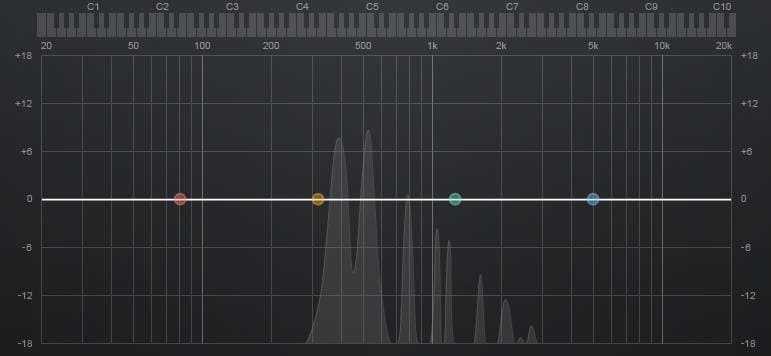
088 Other Synth Leads
088 000 Bass & Lead - Range: A0-C8
In the demo video, notes are played in sequence from A0 to C8. In the lower register, the sound resembles a bass. In the higher register, it takes on a piano-like quality. Chords resonate nicely even in the lower register. Since this is a two-voice patch with slight detuning, it produces a slow beating effect. While it leans toward a synth bass tone, it remains present across all registers. It feels like an ambitious attempt to create a versatile piano-like sound for a wide range of notes. However, creating a patch that sounds good across a wide range is challenging. Most sounds tend to have an optimal range of about two octaves. In this case, striving for usability across the entire range may have resulted in a loss of distinct tonal character.
088 001 Delayed Lead (Soft Wurl) - Range: A0-C8
This patch has a tone that resembles both an electric guitar and an electric piano, with a subtle delay-like effect. However, rather than using actual delay, it seems to rely on modulation. Delay is a simple effect that shifts the timing of a sound, but when used effectively, it can produce stunning results—a fact known for decades. However, using delay tastefully remains one of the trickier challenges in sound design.
The “sound & person” column is made up of contributions from you.
For details about contributing, click here.






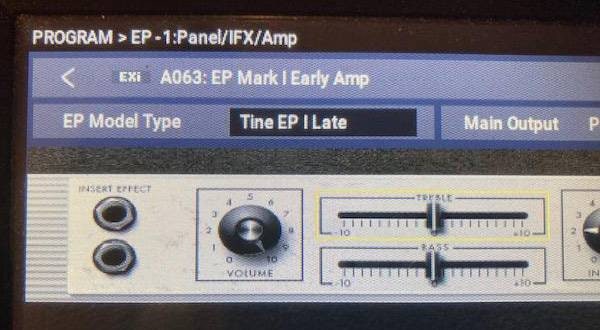




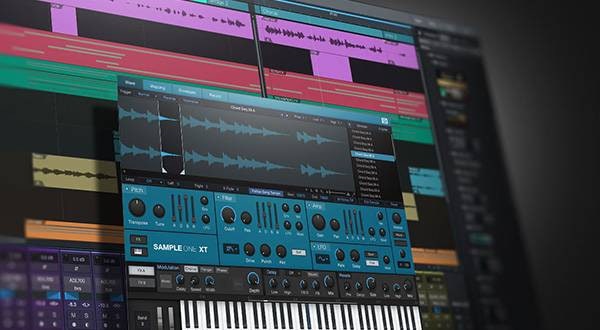

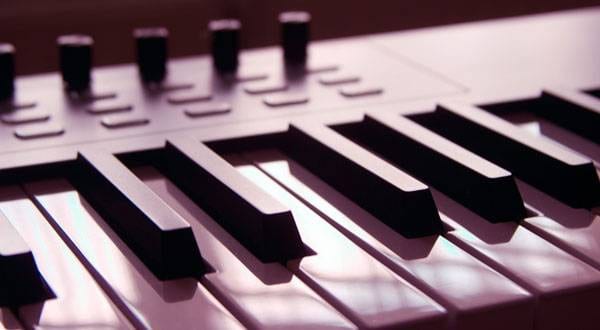
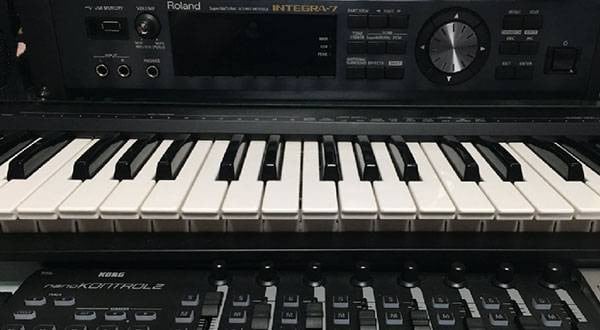

![[2023] Recommended Items for Music Programming - DAW/Software Instruments/Plug-ins](/contents/uploads/thumbs/2/2020/11/20201102_2_11495_1.jpg)
 定番DAWソフトウェア CUBASE
定番DAWソフトウェア CUBASE
 iZotopeが手がけるオールインワンDAW “Spire”
iZotopeが手がけるオールインワンDAW “Spire”
 DTMセール情報まとめ
DTMセール情報まとめ
 ドラム音源に最適なMIDIパッド・コントローラー
ドラム音源に最適なMIDIパッド・コントローラー
 DTMに必要な機材
DTMに必要な機材
 DTM・DAW購入ガイド
DTM・DAW購入ガイド
